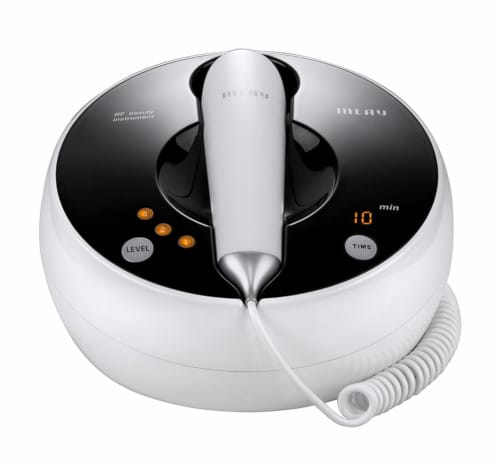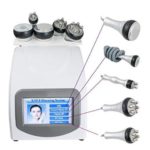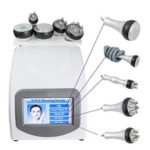Light therapy quality is an important consideration for those seeking to improve their mood, treat seasonal affective disorder, or otherwise benefit from the use of light boxes or lamps. This therapy involves exposure to specific wavelengths of light that can mimic sunlight and positively affect the body’s circadian rhythms. However, Not all light therapy devices are created equal in terms of the amount and quality of light they emit, making it important to choose a high-quality product to ensure optimal results. In this context, understanding the factors that impact light therapy quality can help users make more informed purchasing decisions and maximize the potential benefits of this therapy.
Contents
The Science Behind Light Therapy
Light therapy, also known as phototherapy, is a non-invasive treatment that uses specific wavelengths of light to treat various health conditions. The science behind light therapy is based on the fact that light has a profound effect on our bodies’ natural rhythms, including our sleep-wake cycle and hormone production.
Understanding the Different Types of Light Therapy
There are different types of light therapy, including:
- Blue Light Therapy: Used to treat acne and other skin conditions
- Red Light Therapy: Used for anti-aging and pain relief
- Green Light Therapy: Used to improve skin tone and reduce pigmentation
- Yellow Light Therapy: Used to reduce redness and inflammation
Each type of light therapy uses a different wavelength of light to achieve its specific therapeutic effect.
How Light Therapy Works
When light enters our eyes, it triggers the release of hormones that regulate our sleep-wake cycle. Light therapy uses this same mechanism to promote healing and reduce pain. For example, red light therapy penetrates deep into the skin, promoting the production of collagen and reducing inflammation. Green light therapy targets melanin in the skin, reducing pigmentation and improving skin tone.
Benefits of Light Therapy
Light therapy has been shown to have numerous health benefits, including:
Improved Mood and Energy
Light therapy has been shown to be effective in treating Seasonal Affective Disorder (SAD), a type of depression that occurs during the winter months. Studies have found that exposure to bright light can improve mood and energy levels in people with SAD.
Pain Relief
Light therapy has been shown to be effective in reducing pain in people with fibromyalgia, arthritis, and other chronic pain conditions. Red light therapy, in particular, has been found to be effective in reducing inflammation and promoting healing.
Improved Sleep
Light therapy can help regulate our sleep-wake cycle, which can improve our overall sleep quality. Studies have found that exposure to bright light in the morning can help people with insomnia fall asleep faster and stay asleep longer.
Improved Skin Health
Different types of light therapy can be used to improve various skin conditions, including acne, rosacea, and psoriasis. Red light therapy, in particular, has been found to be effective in reducing wrinkles and improving skin tone.
Non-Invasive Treatment
Light therapy is a non-invasive treatment that does not involve the use of drugs or surgery. This makes it a safe and effective treatment option for people who cannot tolerate traditional medications or who are looking for a natural way to improve their health.
Factors That Affect Light Therapy Quality
Not all light therapy devices are created equal. The quality of light therapy depends on several factors, including:
Type of Light
Different types of light have different therapeutic effects. For example, blue light is used to treat acne, while red light is used for pain relief and anti-aging. It’s important to choose a light therapy device that uses the correct type of light for your specific condition.
Wavelength
The wavelength of light is also important. Different wavelengths of light penetrate the skin to different depths, which affects their therapeutic effect. For example, red light penetrates deeper than blue light, making it more effective for pain relief and anti-aging.
Intensity
The intensity of the light is measured in lux or lumens. The higher the intensity, the more effective the light therapy will be. However, it’s important to choose a light therapy device that is safe and does not cause damage to the skin or eyes.
Duration of Treatment
The duration of the light therapy treatment is also important. The recommended duration of treatment varies depending on the condition being treated and the specific light therapy device being used. It’s important to follow the manufacturer’s instructions and not overuse the device.
Safety Features
Light therapy devices should have safety features to prevent damage to the skin and eyes. For example, some devices have built-in timers to prevent overexposure to the light. It’s important to choose a device that has these safety features to ensure that the treatment is safe and effective.
FAQs for Light Therapy Quality:
What is light therapy, and how does it work?
Light therapy, also known as phototherapy, involves the use of special light sources to treat a variety of conditions. It works by exposing the skin to specific wavelengths of light, which can penetrate into the body and create a variety of biological responses. Depending on the wavelength of light used, light therapy can help improve mood, reduce inflammation, boost energy levels, and even promote wound healing.
What should I look for when choosing a light therapy device?
When choosing a light therapy device, there are a few key factors to consider. First, you’ll want to look for a device that emits the appropriate wavelength of light for your particular condition. For example, blue light is often used to treat acne, while red light is better for improving skin texture and reducing wrinkles. Additionally, you’ll want to choose a device that is of high quality and well-constructed, as this will ensure that you get consistent, reliable results over time.
Are there any potential side effects of light therapy?
In general, light therapy is a safe and well-tolerated treatment modality. However, like any medical treatment, there are some potential risks and side effects to be aware of. For example, some people may experience mild skin irritation or sensitivity after using a light therapy device. Additionally, there is some evidence that exposure to certain wavelengths of light, particularly blue light, may disrupt our sleep patterns if used too close to bedtime. As always, it’s important to consult with your healthcare provider before starting any new treatment protocol.
How long does it take to see results from light therapy?
The length of time it takes to see results from light therapy can vary depending on the condition being treated, as well as individual factors like skin type and how often the device is used. In general, most people will start to see some improvement within the first few weeks of using a light therapy device, but it may take several months of consistent use to achieve optimal results.
Can I use light therapy in combination with other treatments?
Yes! In fact, light therapy is often used in conjunction with other treatments like skincare products, medications, and in-office procedures to enhance their effects. It’s always a good idea to talk with your healthcare provider or aesthetician about the best treatment plan for your particular needs and goals.

.jpg)
.jpg)





